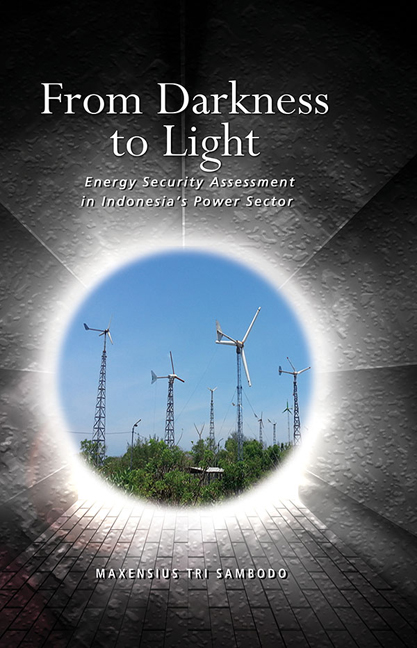Book contents
- Frontmatter
- Dedication
- Contents
- List of Tables
- List of Figures
- List of Abbreviations
- Acknowledgements
- 1 Introduction
- 2 A Historical Overview of the Electricity Sector
- 3 Electricity Production and Consumption: Boom and Bust
- 4 Economic Crisis and Its Impact on the Power Sector
- 5 Electricity and Economic Growth
- 6 Electricity and the Environment
- 7 The Rural Electricity Programme in Indonesia
- 8 Conclusion
- Index
- About the Author
5 - Electricity and Economic Growth
Published online by Cambridge University Press: 05 July 2016
- Frontmatter
- Dedication
- Contents
- List of Tables
- List of Figures
- List of Abbreviations
- Acknowledgements
- 1 Introduction
- 2 A Historical Overview of the Electricity Sector
- 3 Electricity Production and Consumption: Boom and Bust
- 4 Economic Crisis and Its Impact on the Power Sector
- 5 Electricity and Economic Growth
- 6 Electricity and the Environment
- 7 The Rural Electricity Programme in Indonesia
- 8 Conclusion
- Index
- About the Author
Summary
The analysis from the previous chapters indicated that economic growth and electricity consumption and production has a strong correlation. This chapter investigates empirically whether availability (in terms of power consumption) has a causality link to economic growth in Indonesia through the application of econometrics; more specifically, through a time series analysis. This assessment is important in understanding the long-term perspective on economic growth vis-a-vis electricity consumption between 1960 and 2012 (this is the longest time series analysis in the case of Indonesia). Interestingly, the data from the time series analysis approach has supported the conservative hypothesis; this is where electricity consumption conservation may be implemented with little or no adverse effect on economic growth. One can expand on these empirical results of the time series analysis for policy refinement. This analysis adds on to the data available on the issue as a larger data series has been used in comparison to previous studies on Indonesia, such as Squalli (2007) and Sambodo (2011). Furthermore, a diagnostic test has been carefully conducted in order to ensure that the model is econometrically robust.
There are two main reasons why it is important to investigate the relationship between electricity consumption and economic growth. Firstly, Indonesia has a chronic power shortage problem. This has led to unexpected blackouts and forced the government to implement a fast track programme and demand side management, such as by replacing conventional lamps with energy saving lamps. The second reason is because the electricity sector has a direct impact on global warming. In 2008, calculations made at the global level indicated that the proportion of electricity and heat generation to total carbon dioxide emissions amounted to 41 Percent, which made up the highest category when compared to other contributors (IEA 2010). There are three main ways to control carbon dioxide emissions from the electricity sector (IEA 2009): (i) improving energy efficiency for electricity end users; (ii) providing policy incentives (such as through a tax on carbon dioxide emissions or providing subsidies that promote low carbon technology); (iii) enhancing research and development in low carbon generation technologies.
- Type
- Chapter
- Information
- From Darkness to LightEnergy Security Assessment in Indonesia's Power Sector, pp. 94 - 111Publisher: ISEAS–Yusof Ishak InstitutePrint publication year: 2016



